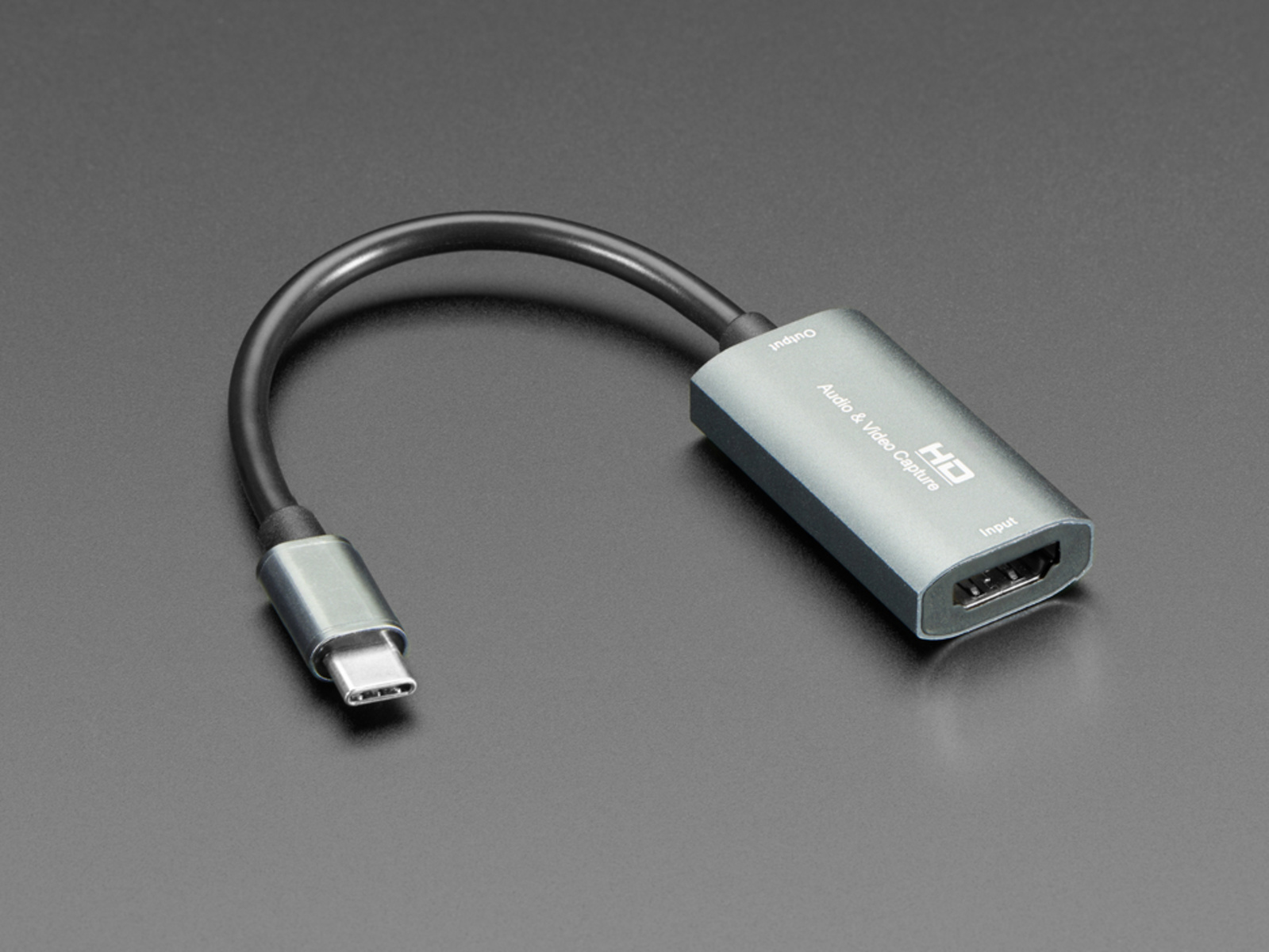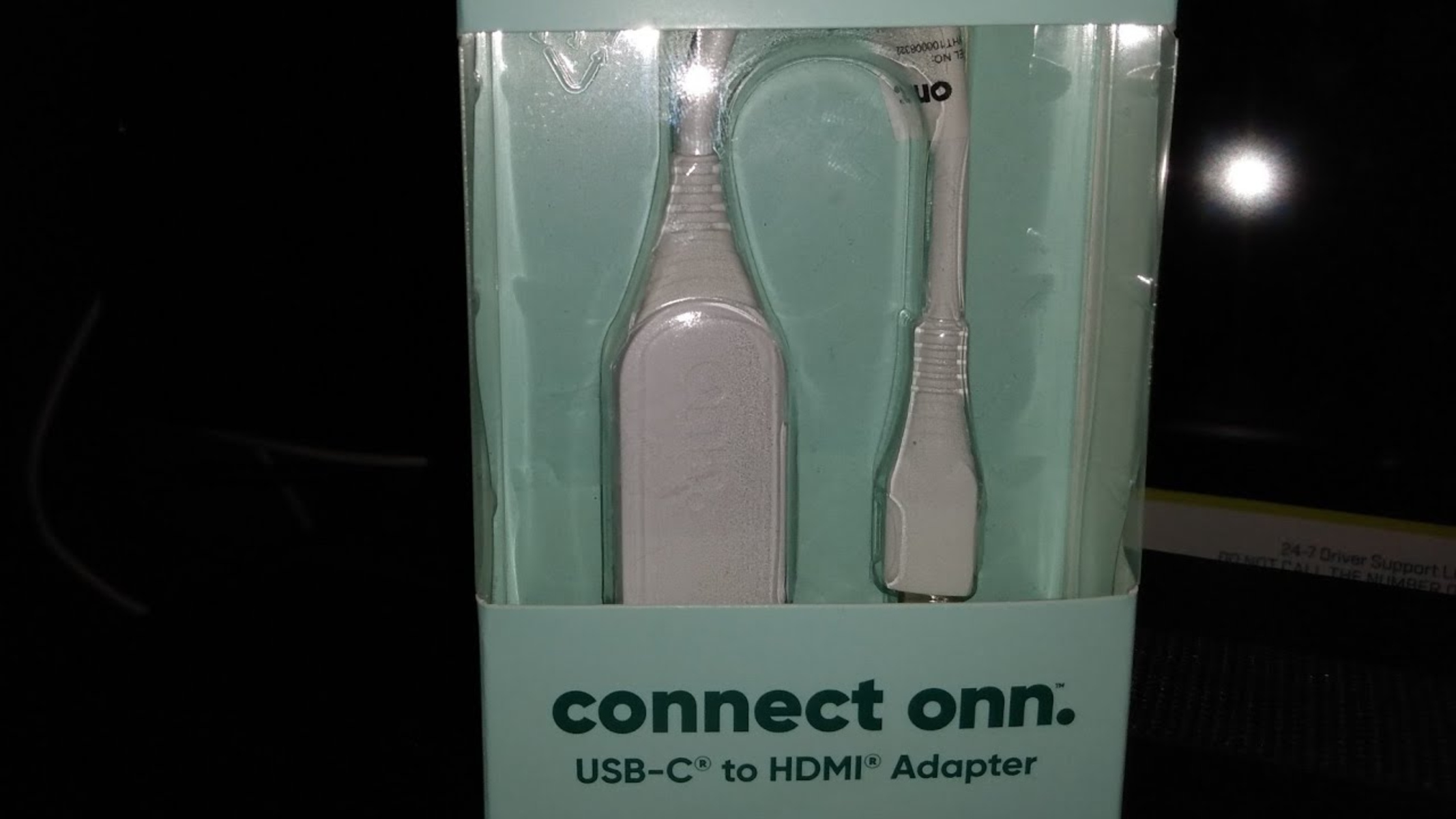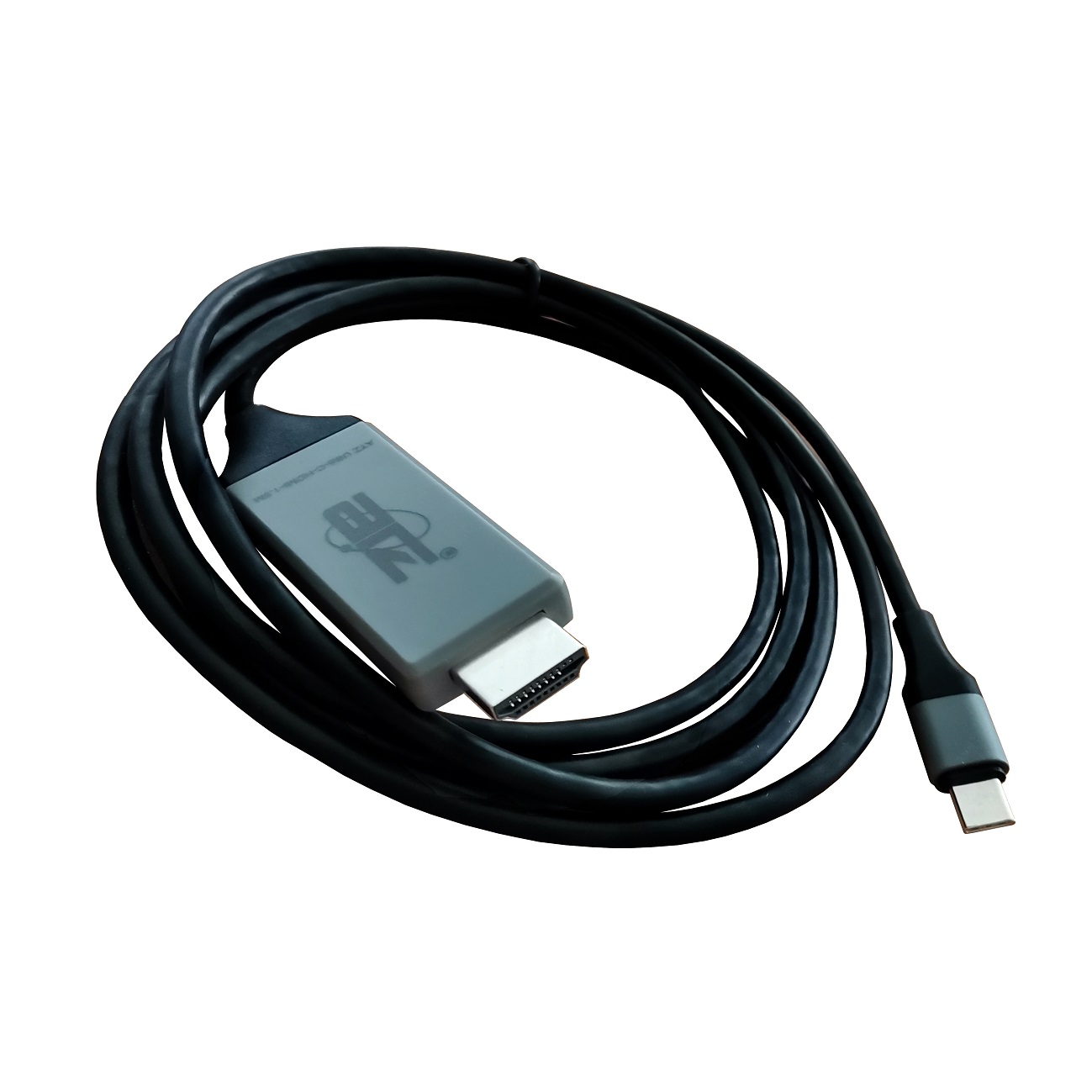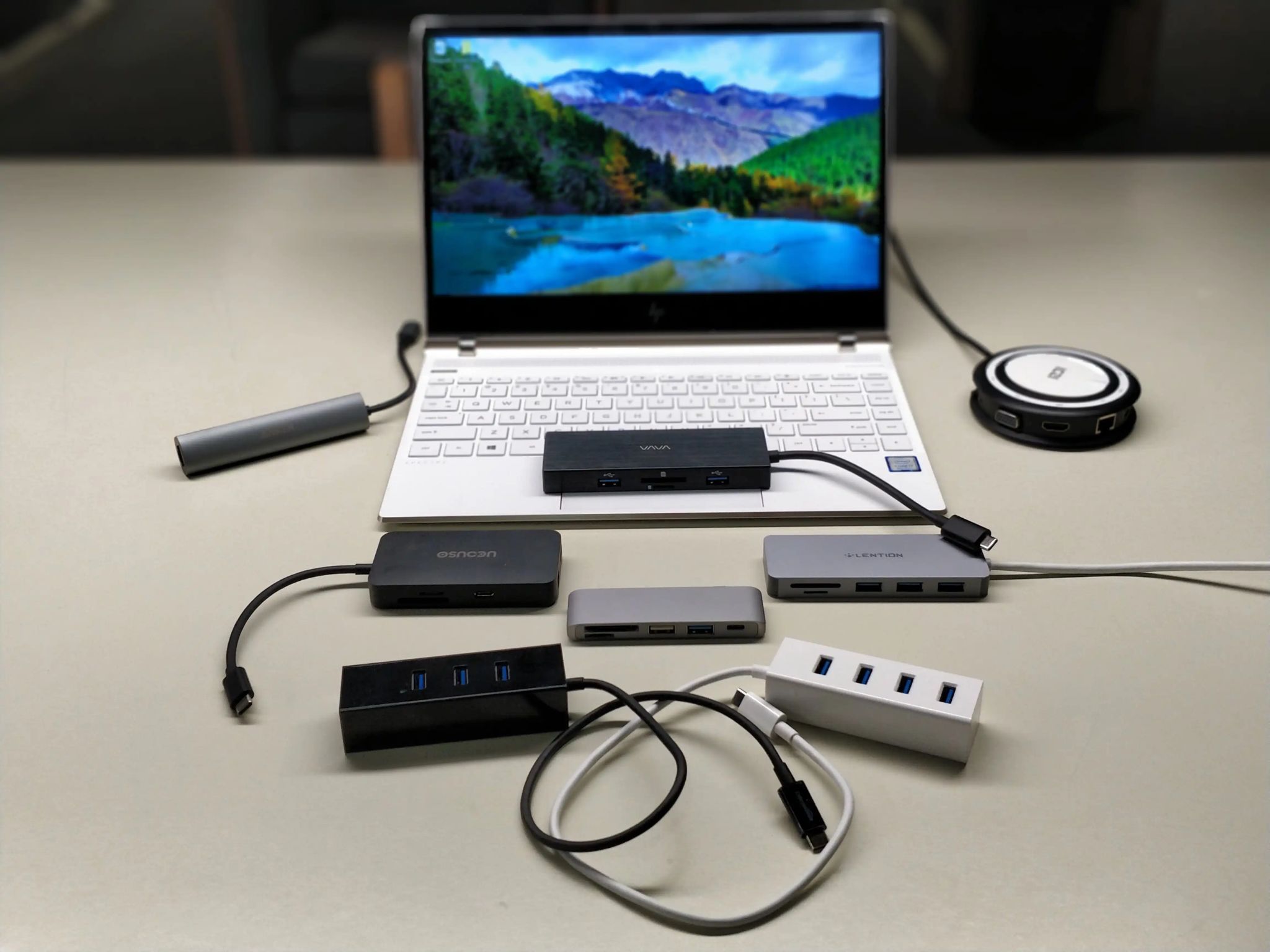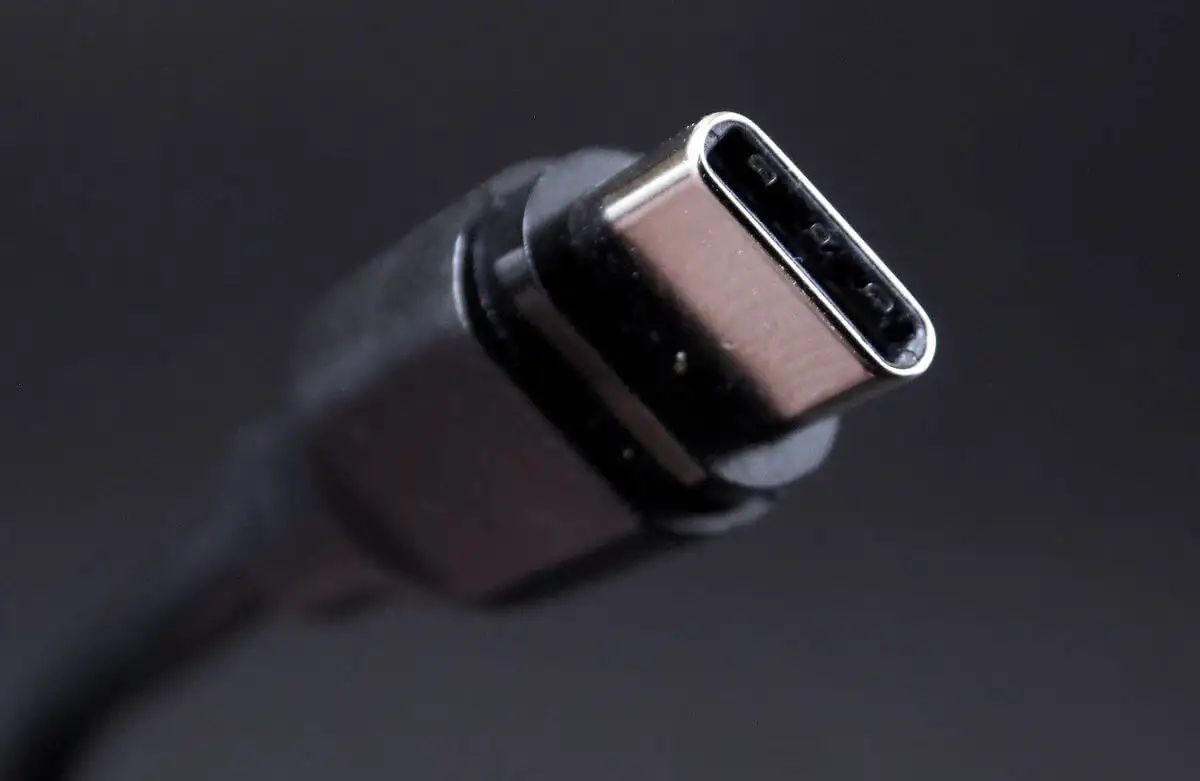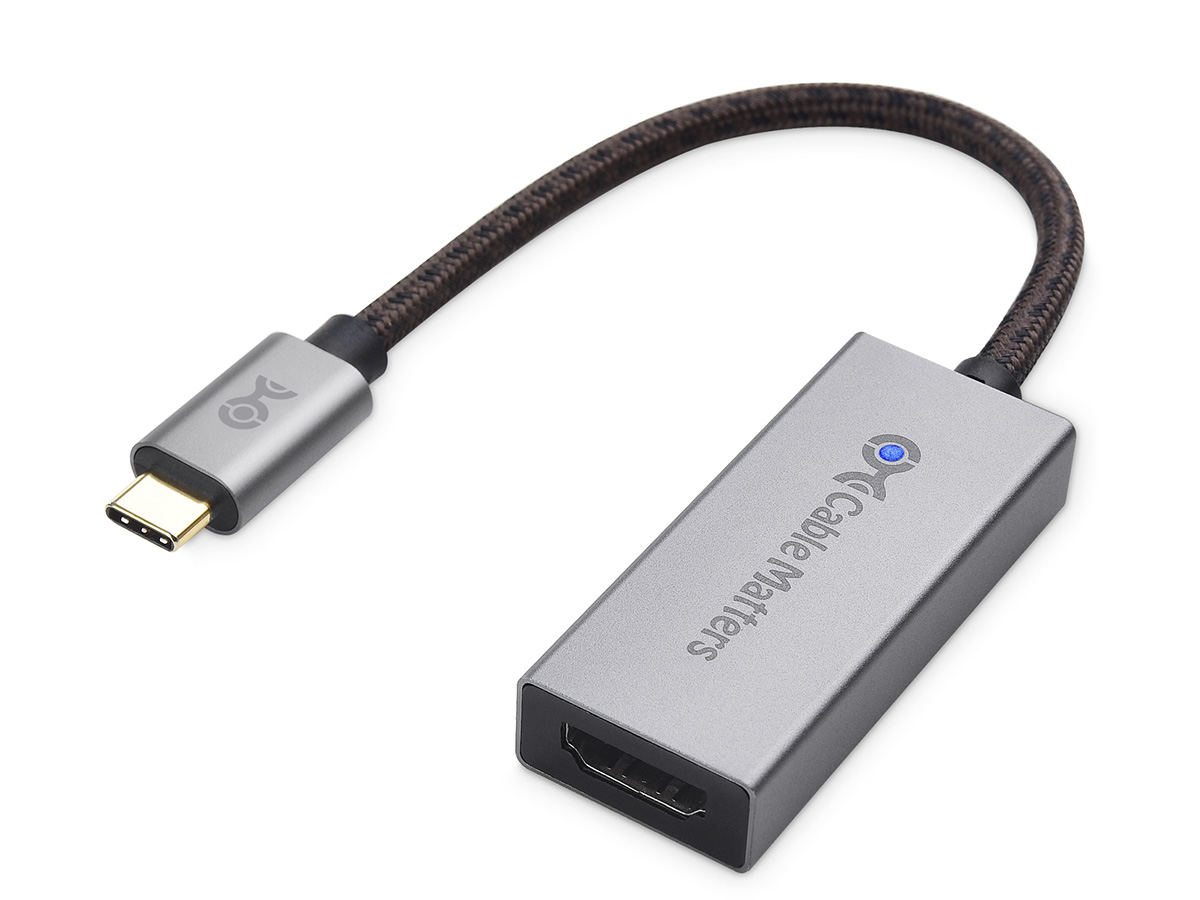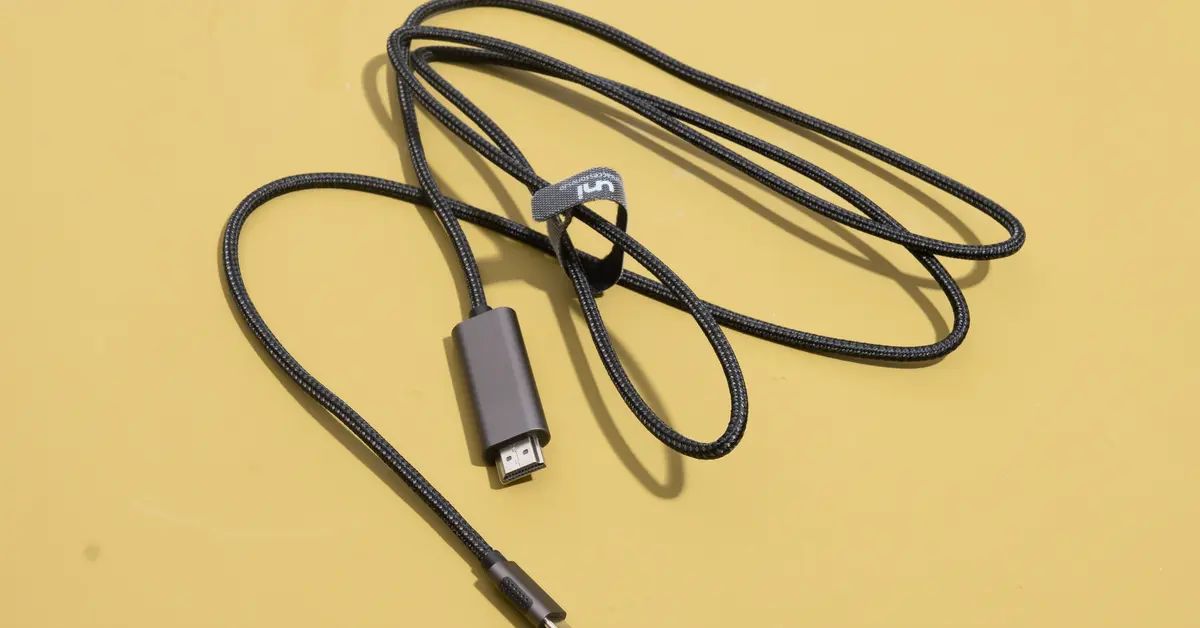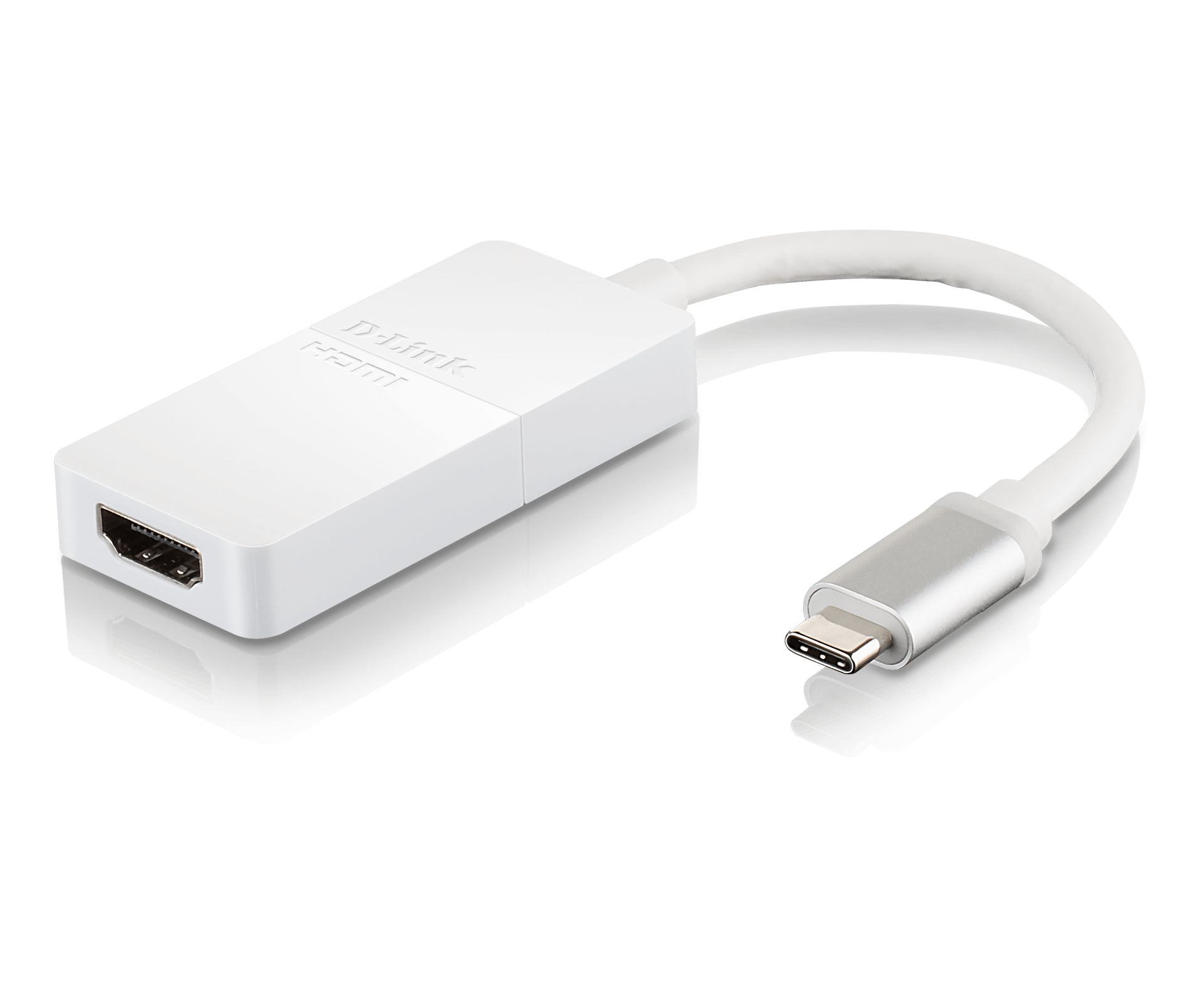What is a USB-C to HDMI Adapter?
A USB-C to HDMI adapter is a small device that allows you to connect a USB-C port on your device, such as a laptop or smartphone, to an HDMI-enabled display, such as a monitor or TV. It serves as a bridge between the two different types of ports, enabling you to transmit audio and video signals from your device to the external display.
USB-C, short for Universal Serial Bus Type-C, is a versatile and increasingly popular connectivity standard. It offers several advantages, including faster data transfer speeds, higher power delivery, and the ability to transmit audio and video signals. HDMI, on the other hand, stands for High-Definition Multimedia Interface, and it is the industry standard for transmitting high-quality audio and video signals.
The USB-C to HDMI adapter allows you to take advantage of the capabilities of both the USB-C and HDMI standards. It lets you connect your device to an HDMI display and enjoy high-resolution video playback on a larger screen, extend your device’s display to create a dual-monitor setup, or use your device as a presentation tool in meetings or conferences.
Additionally, USB-C to HDMI adapters are compact and portable, making them convenient for travel or on-the-go use. They are compatible with various devices, including laptops, tablets, smartphones, and even gaming consoles, as long as they have a USB-C port.
In summary, a USB-C to HDMI adapter is a practical accessory that allows you to connect your USB-C device to an HDMI display, opening up a wide range of possibilities for multimedia consumption, productivity, and presentation purposes.
Benefits of Using a USB-C to HDMI Adapter
Using a USB-C to HDMI adapter offers several benefits and advantages. Whether you’re a professional who frequently presents in meetings, a content creator who needs a larger display for editing, or simply someone who enjoys watching high-quality videos on a big screen, a USB-C to HDMI adapter can enhance your overall experience. Let’s explore some of the key benefits:
- High-Quality Video and Audio: One of the primary benefits of using a USB-C to HDMI adapter is the ability to transmit high-quality video and audio signals. HDMI supports resolutions up to 4K Ultra HD, ensuring crisp and vivid visuals on your external display. Additionally, HDMI carries both video and audio signals, eliminating the need for separate audio cables.
- Expand Your Screen Real Estate: With a USB-C to HDMI adapter, you can extend your device’s display to a larger monitor or TV. This is particularly useful for professionals who need extra screen space for multitasking or content creators who require a larger canvas for editing videos, photos, or graphics. It allows you to be more productive and efficient in your work.
- Presentations and Meetings: For professionals who frequently present in meetings or conferences, a USB-C to HDMI adapter is a valuable tool. It enables you to connect your device to a projector or large display, allowing you to deliver captivating presentations with ease. You can showcase slideshows, videos, or demos on a bigger screen, making a stronger impact on your audience.
- Compatibility and Convenience: USB-C to HDMI adapters are compatible with a wide range of devices, including laptops, tablets, smartphones, and gaming consoles, as long as they feature a USB-C port. This versatility ensures that you can connect your device to various HDMI-enabled displays, whether you’re at home, the office, or on the go. The compact and portable design of the adapter adds to the convenience, allowing you to carry it with you wherever you need it.
- Easy Setup and Plug-and-Play: Setting up a USB-C to HDMI connection is incredibly simple. Just plug one end of the adapter into your device’s USB-C port and the other end into the HDMI port of your external display. Most adapters are “plug-and-play,” meaning they don’t require any additional software or drivers. The connection is established instantly, allowing you to start using the external display immediately.
In summary, the benefits of using a USB-C to HDMI adapter include high-quality video and audio transmission, expanded screen real estate for increased productivity, seamless presentations and meeting capabilities, compatibility with various devices, and easy setup and plug-and-play functionality. Incorporating a USB-C to HDMI adapter into your setup can greatly enhance your multimedia experience and improve your workflow.
How to Connect a USB-C to HDMI Adapter to Your Device
Connecting a USB-C to HDMI adapter to your device is a simple and straightforward process. Here’s a step-by-step guide to help you set up the connection:
- Check Compatibility: Ensure that your device, such as a laptop or smartphone, has a USB-C port. This is the port that you’ll be connecting the USB-C to HDMI adapter to. Confirm that the HDMI-enabled display you want to connect to has an available HDMI port.
- Purchase the Right Adapter: There are various USB-C to HDMI adapters available in the market. Make sure to choose an adapter that is compatible with your specific device and offers the desired features and capabilities. Check the adapter specifications for compatibility with the operating system of your device.
- Power Off Your Device: It is recommended to power off your device before connecting the adapter. This will ensure a safe and stable connection.
- Connect the Adapter: Take one end of the USB-C to HDMI adapter and insert it into the USB-C port on your device. Be sure to insert it fully and firmly to establish a secure connection.
- Connect the HDMI Cable: Take the other end of the adapter, which features an HDMI port, and plug in the HDMI cable from the external display into this port. Ensure that the HDMI cable is securely connected to both the adapter and the display.
- Power On Your Device: Once the adapter and HDMI cable are connected, power on your device. The connection should be detected automatically, and the display should mirror or extend to the external HDMI-enabled display.
- Adjust Display Settings: Depending on your operating system, you may need to adjust the display settings to optimize the output on the external display. This includes resolution, screen orientation, and other display preferences. Consult your device’s user manual or the operating system’s settings for guidance.
That’s it! You have successfully connected a USB-C to HDMI adapter to your device. You can now enjoy your device’s content on a larger screen, use it for presentations, or extend your workspace for increased productivity.
Step-by-Step Guide to Setting Up a USB-C to HDMI Connection
Setting up a USB-C to HDMI connection is a quick and simple process. Follow these step-by-step instructions to establish a connection between your device and an HDMI-enabled display:
- Check Compatibility: Make sure that your device has a USB-C port and that the display you want to connect to has an available HDMI port.
- Purchase the Right Adapter: Choose a USB-C to HDMI adapter that is compatible with your device and meets your requirements. Ensure that it supports the operating system of your device.
- Power Off Your Device: Turn off your device before connecting the adapter to ensure a safe connection.
- Connect the Adapter: Insert one end of the USB-C to HDMI adapter into the USB-C port on your device. Ensure it is securely plugged in.
- Connect the HDMI Cable: Take the other end of the adapter, which features an HDMI port, and connect it to the HDMI cable from the external display. Securely connect both ends to ensure a stable connection.
- Power On Your Device: Power on your device once the adapter and HDMI cable are connected.
- Configure Display Settings: Depending on your device and operating system, you may need to adjust the display settings. Access the display settings menu and select the appropriate options, such as resolution and screen orientation, to optimize the output on the external display.
- Test the Connection: Once you have completed the setup, test the connection by playing a video or launching an application on your device. The content should appear on the HDMI-enabled display.
- Enjoy Your Enhanced Viewing Experience: Now that the USB-C to HDMI connection is established, you can enjoy your device’s content on a larger screen, use it for presentations, or expand your workspace for enhanced productivity.
Follow these steps, and you’ll be able to set up a USB-C to HDMI connection with ease. Remember to consult your device’s manual or the operating system’s settings for specific instructions if needed.
Troubleshooting Common Issues with USB-C to HDMI Adapter
While using a USB-C to HDMI adapter is generally a straightforward process, you may encounter some common issues that can hinder the connection or affect the display quality. Here are some troubleshooting tips to help you resolve these issues:
- No Signal or Blank Screen: If you’re not getting a signal or experiencing a blank screen on the external display, first ensure that the HDMI cable is securely connected to both the adapter and the display. If the problem persists, try disconnecting and reconnecting the adapter, or try a different USB-C port on your device.
- Unsupported Resolution: If the resolution of the external display is not supported or displays incorrectly, check your device’s display settings. Set the resolution to a compatible option and make sure the refresh rate matches the display’s capabilities. Additionally, ensure that both the adapter and cable support the desired resolution.
- No Audio: If there is no audio output from the external display, check the audio settings on your device. Verify that the audio output is routed to the HDMI connection and not another output device. Ensure that the HDMI cable is firmly connected and functioning properly.
- Intermittent Connectivity: If your USB-C to HDMI connection is intermittent or keeps disconnecting, it could be due to a loose connection. Check that the adapter and HDMI cable are securely plugged in. If the problem persists, try using a different adapter or cable to rule out any hardware issues.
- Incompatible Adapter: In some cases, using an incompatible adapter can cause issues with the USB-C to HDMI connection. Make sure you have selected an adapter that is specifically designed for your device and is compatible with the operating system you are using. Consult the manufacturer’s guidelines or customer support for assistance.
- Outdated Drivers or Firmware: Ensure that your device’s drivers and firmware are up to date. Outdated software can cause compatibility issues and impact the functionality of the USB-C to HDMI adapter. Visit the manufacturer’s website or use the software update feature on your device to check for driver and firmware updates.
- Device Charging: Some USB-C to HDMI adapters may not support device charging while connected to an external display. If you require device charging during use, check that the adapter explicitly supports power delivery or charging passthrough.
By following these troubleshooting tips, you can resolve common issues and ensure a smooth USB-C to HDMI connection. If these steps do not solve the problem, consult the user manual of your adapter or reach out to the manufacturer’s customer support for further assistance.
Tips and Tricks for Using a USB-C to HDMI Adapter Effectively
To make the most out of your USB-C to HDMI adapter and ensure a seamless experience with your external display, here are some helpful tips and tricks:
- Select a High-Quality Adapter: Invest in a reputable and high-quality USB-C to HDMI adapter. Cheaper adapters may not provide stable connections or support higher resolutions, resulting in a subpar experience.
- Check Adapter Compatibility: Before purchasing an adapter, verify its compatibility with your device and operating system. Check user reviews and manufacturer specifications to ensure it is designed for your specific device.
- Use High-Quality HDMI Cables: Ensure that you use high-quality HDMI cables that support the resolution and refresh rate of your display. This will help maintain a reliable and high-quality connection between the adapter and the display.
- Adjust Display Settings: Experiment with the display settings on your device to optimize the output on the external display. Adjust the resolution, screen orientation, and color settings to achieve the desired visual experience.
- Manage Power Consumption: USB-C ports can provide power to connected devices. Be mindful of power consumption, especially if you are using the adapter with a laptop or smartphone. Disconnect unnecessary peripherals or use a USB-C hub to manage power distribution effectively.
- Keep the Adapter and Ports Clean: Regularly inspect and clean the adapter and ports to remove any dust or debris that may affect the connection. Use compressed air or a soft, dry cloth to gently clean the contacts and ensure a reliable connection.
- Update Drivers and Firmware: Periodically check for driver and firmware updates for your adapter. Keeping them up to date ensures compatibility with the latest operating system updates and improves overall performance.
- Use the Correct Source/Input: If your external display has multiple input options, ensure that it is set to the correct HDMI input source. This will ensure that the display receives the signal from your device via the USB-C to HDMI adapter.
- Disconnect Safely: When you’re finished using the adapter, eject or safely disconnect it from your device. This helps prevent any potential data loss or damage to the adapter’s components.
- Read User Manual or Online Resources: Familiarize yourself with the user manual of your adapter. It may provide specific instructions or additional tips for optimal usage. Online resources, forums, and support communities can also be helpful sources of information and troubleshooting assistance.
By following these tips and tricks, you can ensure a smooth and effective experience when using a USB-C to HDMI adapter. Maximize the capabilities of your device and external display, and enjoy enhanced productivity, multimedia consumption, and presentations.
Best USB-C to HDMI Adapters on the Market
When it comes to USB-C to HDMI adapters, there are several options available that offer reliable performance and convenient features. Here are some of the top choices on the market:
- 1. Apple USB-C Digital AV Multiport Adapter: Designed specifically for Apple devices, this adapter supports 4K Ultra HD resolution and transmits both video and audio signals. It also includes an additional USB-C port and a USB-A port for connecting other peripherals.
- 2. Cable Matters USB-C to HDMI Adapter: This adapter offers a cost-effective solution without compromising on quality. It supports 4K resolution, features a sturdy build, and transmits both video and audio signals. It is compatible with a wide range of devices and requires no additional drivers.
- 3. Anker USB-C to HDMI Adapter: Known for its reliability, Anker offers a compact and lightweight adapter that supports 4K resolution and provides a stable connection. It is compatible with various devices and does not require any drivers or additional software.
- 4. CableCreation USB-C to HDMI Adapter: This adapter boasts a sleek and durable design with 4K resolution support. It is compatible with multiple operating systems and devices, including laptops, tablets, and smartphones. The adapter is plug-and-play, requiring no additional configuration.
- 5. Dell USB-C to HDMI Adapter: Designed with compatibility in mind, this adapter is specifically engineered for Dell devices. It supports up to 4K resolution and provides a reliable and high-quality connection. It also features a compact and portable design, making it ideal for users on the go.
- 6. Lenovo USB-C to HDMI Adapter: Lenovo offers a versatile adapter that supports up to 4K resolution and provides a seamless connection between USB-C devices and HDMI displays. It is compatible with various operating systems, including Windows, macOS, and Chrome OS.
- 7. Belkin USB-C to HDMI Adapter: Known for its quality and performance, Belkin offers an adapter that supports 4K resolution and delivers high-definition video and audio signals. It is compatible with a broad range of devices and provides a secure and stable connection.
These are just a few examples of the best USB-C to HDMI adapters available on the market. Before making a purchase, consider your specific device’s compatibility and your desired features, such as resolution support, additional ports, and ease of use. Read user reviews and compare options to find the adapter that best meets your needs.
Conclusion
A USB-C to HDMI adapter is a versatile accessory that allows you to connect your USB-C enabled device to an HDMI-enabled display, opening up a world of possibilities for multimedia consumption, productivity, and presentations. By transmitting high-quality video and audio signals, these adapters enhance your viewing experience and offer the convenience of a larger screen. Whether you’re an avid content creator, a professional in need of a dual-monitor setup, or simply someone who enjoys watching videos on a bigger display, a USB-C to HDMI adapter can greatly enhance your overall experience.
When using a USB-C to HDMI adapter, it’s important to choose a high-quality adapter that is compatible with your specific device and operating system. Additionally, using high-quality HDMI cables and keeping the adapter and ports clean will help maintain a reliable and stable connection. Adjusting display settings, managing power consumption, and staying updated with the latest drivers and firmware are also crucial for optimal performance.
While there are several options available on the market, it’s recommended to research and choose a reputable brand that offers the necessary features and compatibility for your setup. Options such as the Apple USB-C Digital AV Multiport Adapter, Cable Matters USB-C to HDMI Adapter, Anker USB-C to HDMI Adapter, and others provide reliable performance and convenience.
In conclusion, a USB-C to HDMI adapter is a powerful tool that enhances your device’s capabilities and allows you to enjoy high-quality visual and audio experiences on a larger screen. With the right adapter and a seamless setup, you can achieve productivity, entertainment, and presentation excellence.







